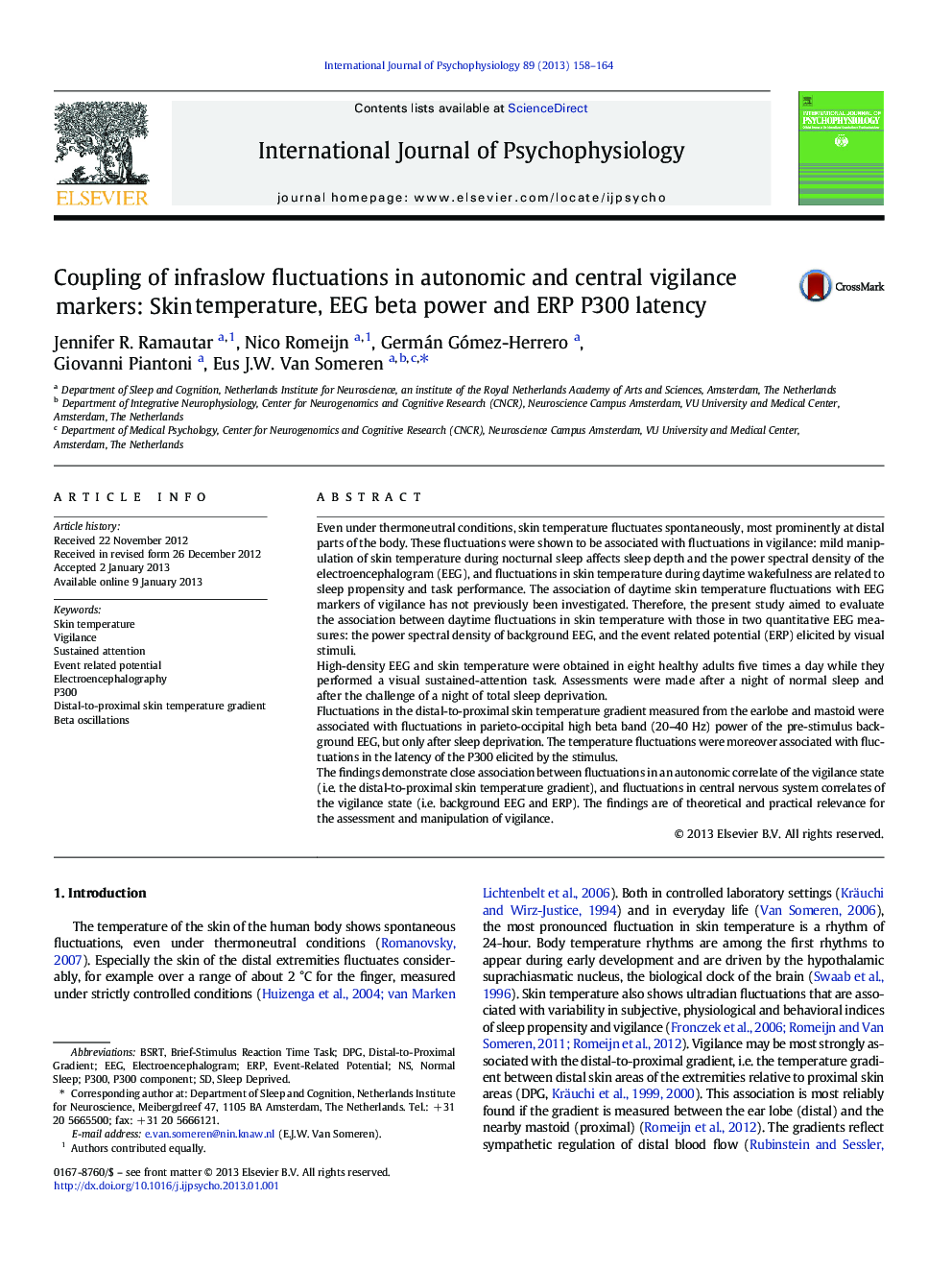| کد مقاله | کد نشریه | سال انتشار | مقاله انگلیسی | نسخه تمام متن |
|---|---|---|---|---|
| 930379 | 1474428 | 2013 | 7 صفحه PDF | دانلود رایگان |

Even under thermoneutral conditions, skin temperature fluctuates spontaneously, most prominently at distal parts of the body. These fluctuations were shown to be associated with fluctuations in vigilance: mild manipulation of skin temperature during nocturnal sleep affects sleep depth and the power spectral density of the electroencephalogram (EEG), and fluctuations in skin temperature during daytime wakefulness are related to sleep propensity and task performance. The association of daytime skin temperature fluctuations with EEG markers of vigilance has not previously been investigated. Therefore, the present study aimed to evaluate the association between daytime fluctuations in skin temperature with those in two quantitative EEG measures: the power spectral density of background EEG, and the event related potential (ERP) elicited by visual stimuli.High-density EEG and skin temperature were obtained in eight healthy adults five times a day while they performed a visual sustained-attention task. Assessments were made after a night of normal sleep and after the challenge of a night of total sleep deprivation.Fluctuations in the distal-to-proximal skin temperature gradient measured from the earlobe and mastoid were associated with fluctuations in parieto-occipital high beta band (20–40 Hz) power of the pre-stimulus background EEG, but only after sleep deprivation. The temperature fluctuations were moreover associated with fluctuations in the latency of the P300 elicited by the stimulus.The findings demonstrate close association between fluctuations in an autonomic correlate of the vigilance state (i.e. the distal-to-proximal skin temperature gradient), and fluctuations in central nervous system correlates of the vigilance state (i.e. background EEG and ERP). The findings are of theoretical and practical relevance for the assessment and manipulation of vigilance.
► EEG markers of vigilance covary with fluctuations in skin temperature.
► A higher distal temperature predicts a more delayed P300.
► After sleep deprivation, a higher distal temperature predicts lower EEG beta power.
Journal: International Journal of Psychophysiology - Volume 89, Issue 2, August 2013, Pages 158–164